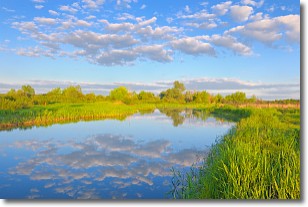Weather Alert in Texas
Wind Advisory issued April 1 at 2:07AM CDT until April 1 at 10:00PM CDT by NWS Lubbock TX
AREAS AFFECTED: Parmer; Castro; Swisher; Briscoe; Bailey; Lamb; Hale; Floyd; Cochran; Hockley; Lubbock; Crosby; Yoakum; Terry; Lynn; Garza
DESCRIPTION: * WHAT...For the Wind Advisory, southwest winds 25 to 35 mph with gusts up to 55 mph. For the Blowing Dust Advisory, visibility of one-quarter to one mile in blowing dust. * WHERE...For the Wind Advisory, all of the South Plains, Rolling Plains and far southern Texas Panhandle. For the Blowing Dust Advisory, all areas on the Caprock. * WHEN...For the Wind Advisory, from 10 AM this morning to 10 PM CDT this evening. For the Blowing Dust Advisory, from 1 PM this afternoon to 10 PM CDT this evening. * IMPACTS...Hazardous driving conditions due to reduced visibility. Strong winds will blow around unsecured objects and a few power outages may result.
INSTRUCTION: Persons with respiratory problems should make plan to stay indoors until the blowing dust subsides. If driving, be ready for a sudden drop in visibility. If you encounter blowing dust or blowing sand on the roadway or see it approaching, pull off the road as far as possible and put your vehicle in park. Turn the lights all the way off and keep foot off the brake pedal. Remember, 'Pull Aside, Stay Alive'. Winds this strong will make driving difficult, especially for high profile vehicles. Use extra caution. Secure loose outdoor objects.
Want more detail? Get the Complete 7 Day and Night Detailed Forecast!
Current U.S. National Radar--Current
The Current National Weather Radar is shown below with a UTC Time (subtract 5 hours from UTC to get Eastern Time).

National Weather Forecast--Current
The Current National Weather Forecast and National Weather Map are shown below.

National Weather Forecast for Tomorrow
Tomorrow National Weather Forecast and Tomorrow National Weather Map are show below.

North America Water Vapor (Moisture)
This map shows recent moisture content over North America. Bright and colored areas show high moisture (ie, clouds); brown indicates very little moisture present; black indicates no moisture.

Weather Topic: What is Sleet?
Home - Education - Precipitation - Sleet
 Next Topic: Snow
Next Topic: Snow
Sleet is a form of precipitation in which small ice pellets are the primary
components. These ice pellets are smaller and more translucent than hailstones,
and harder than graupel. Sleet is caused by specific atmospheric conditions and
therefore typically doesn't last for extended periods of time.
The condition which leads to sleet formation requires a warmer body of air to be
wedged in between two sub-freezing bodies of air. When snow falls through a warmer
layer of air it melts, and as it falls through the next sub-freezing body of air
it freezes again, forming ice pellets known as sleet. In some cases, water
droplets don't have time to freeze before reaching the surface and the result is
freezing rain.
Next Topic: Snow
Weather Topic: What are Stratocumulus Clouds?
Home - Education - Cloud Types - Stratocumulus Clouds
 Next Topic: Stratus Clouds
Next Topic: Stratus Clouds
Stratocumulus clouds are similar to altocumulus clouds in their
fluffy appearance, but have a slightly darker shade due to their additional mass.
A good way to distinguish the two cloud types is to hold your hand out and measure
the size of an individual cloud; if it is the size of your thumb it is generally
an altocumulus cloud, if it is the size of your hand it is generally a
stratocumulus cloud.
It is uncommon for stratocumulus clouds to produce precipitation, but if they do
it is usually a light rain or snow.
Next Topic: Stratus Clouds
Current conditions powered by WeatherAPI.com




